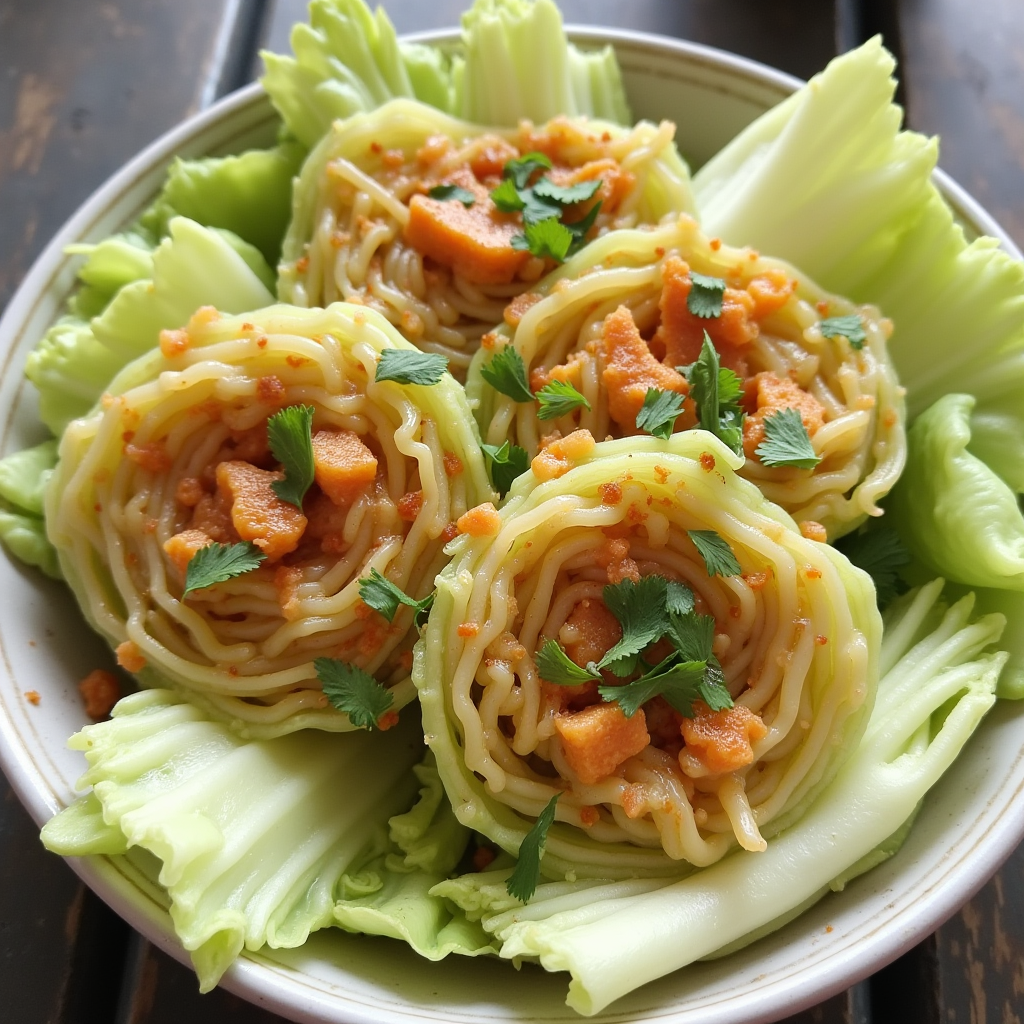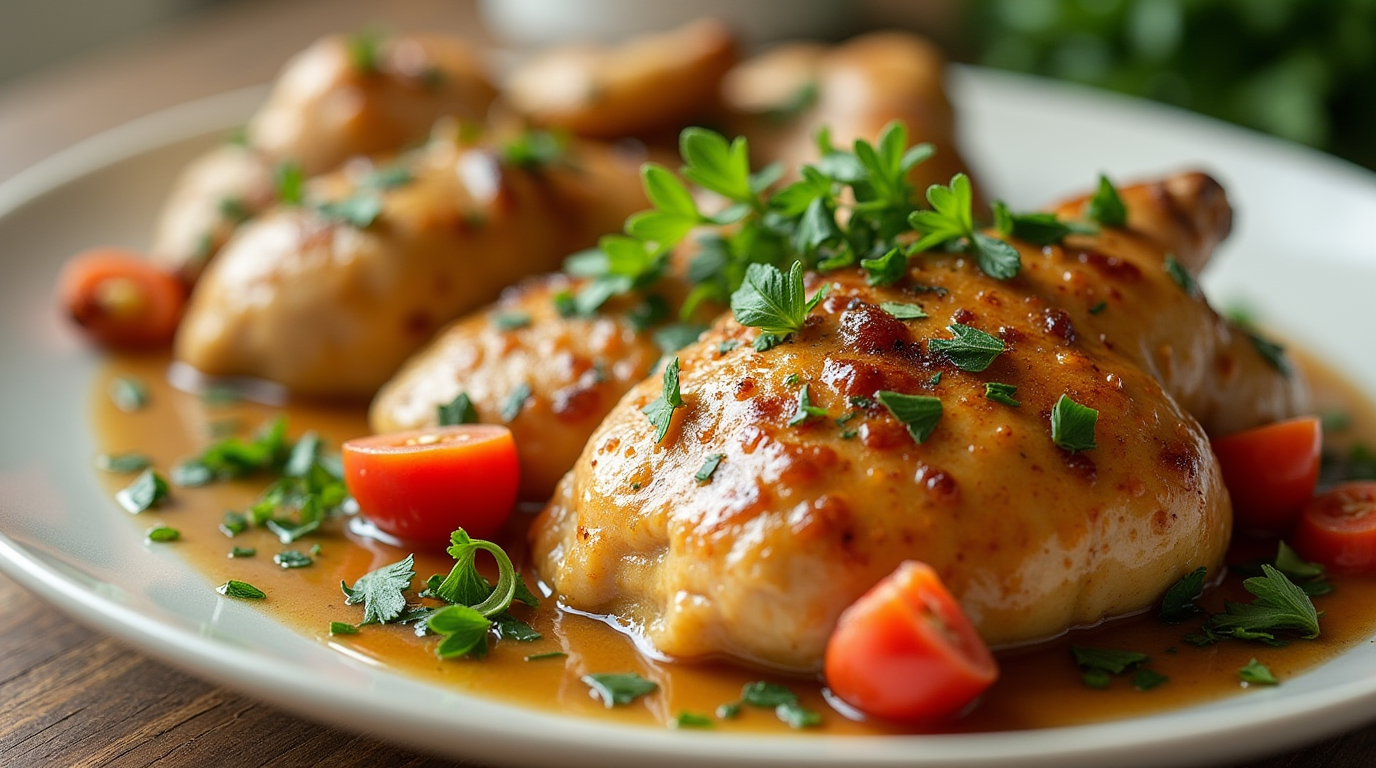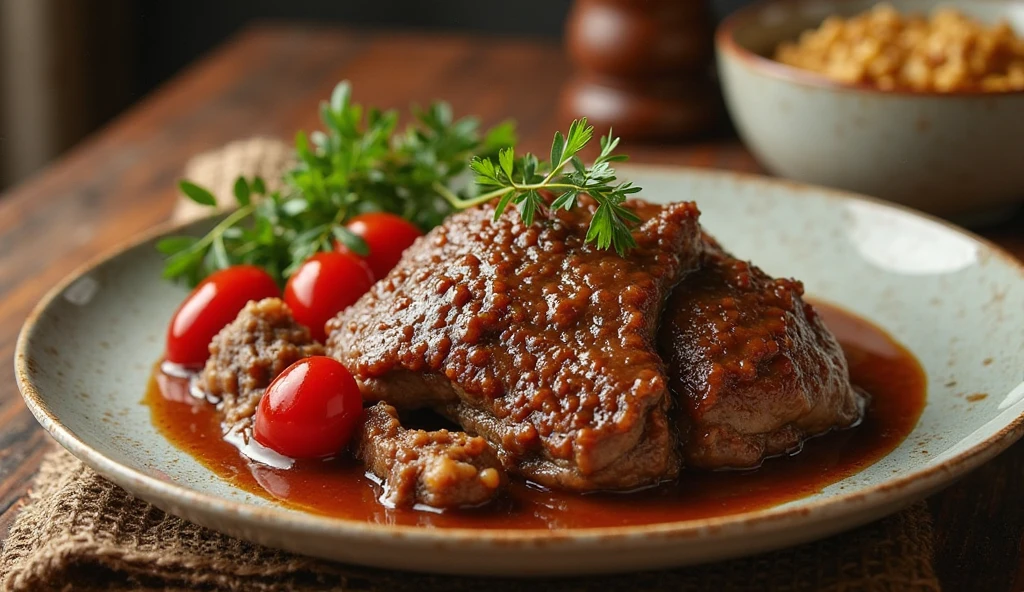
Few dishes of Delicious German Sauerbraten embody the rich culinary heritage of Germany as perfectly as Sauerbraten. This iconic pot roast, marinated for days in a tangy-sweet blend of vinegar, spices, and aromatics, is a celebration of deep, complex flavors and tender, melt-in-your-mouth meat. Often served at family gatherings and festive occasions, Sauerbraten is a dish steeped in tradition, with regional variations that reflect Germany’s diverse culinary landscape.
Whether you’re a seasoned cook or a curious food enthusiast, this guide will walk you through everything you need to know to prepare an authentic German Sauerbraten at home—from selecting the right cut of meat to mastering the perfect balance of sweet and sour flavors.
Table of Contents
🔑 Key Takeaways
- Origin: A classic German pot roast with roots dating back to the Middle Ages, often linked to the Rhineland region.
- Main Ingredients: Beef (traditionally tough cuts like rump or chuck), red wine vinegar, onions, spices (cloves, juniper berries, bay leaves), and gingersnap cookies for thickening.
- Cooking Method: Slow-braised after a 3-5 day marinade, resulting in fork-tender meat and a rich, velvety gravy.
- Signature Flavor: A perfect harmony of tangy, sweet, and savory notes from the marinade and slow cooking.
- Serving Style: Traditionally paired with red cabbage (Rotkohl) and potato dumplings (Kartoffelklöße).
- Cultural Significance: A beloved Sunday family meal and a staple at German festivals.
🌍 Cultural Heritage: The Story Behind Sauerbraten
Sauerbraten (which translates to “sour roast”) has a long history in Germany, with some accounts tracing it back to Charlemagne’s era in the 9th century. The method of marinating tough cuts of meat in acidic liquids was a practical way to tenderize and preserve meat before refrigeration.
Different regions in Germany have their own takes:
- Rhineland Sauerbraten: Uses red wine vinegar and often includes raisins.
- Franconian Sauerbraten: Incorporates beer into the marinade.
- Swabian Sauerbraten: Features a darker gravy with gingersnap cookies for thickening.
This dish remains a centerpiece of German family meals, especially during holidays like Christmas and Oktoberfest.
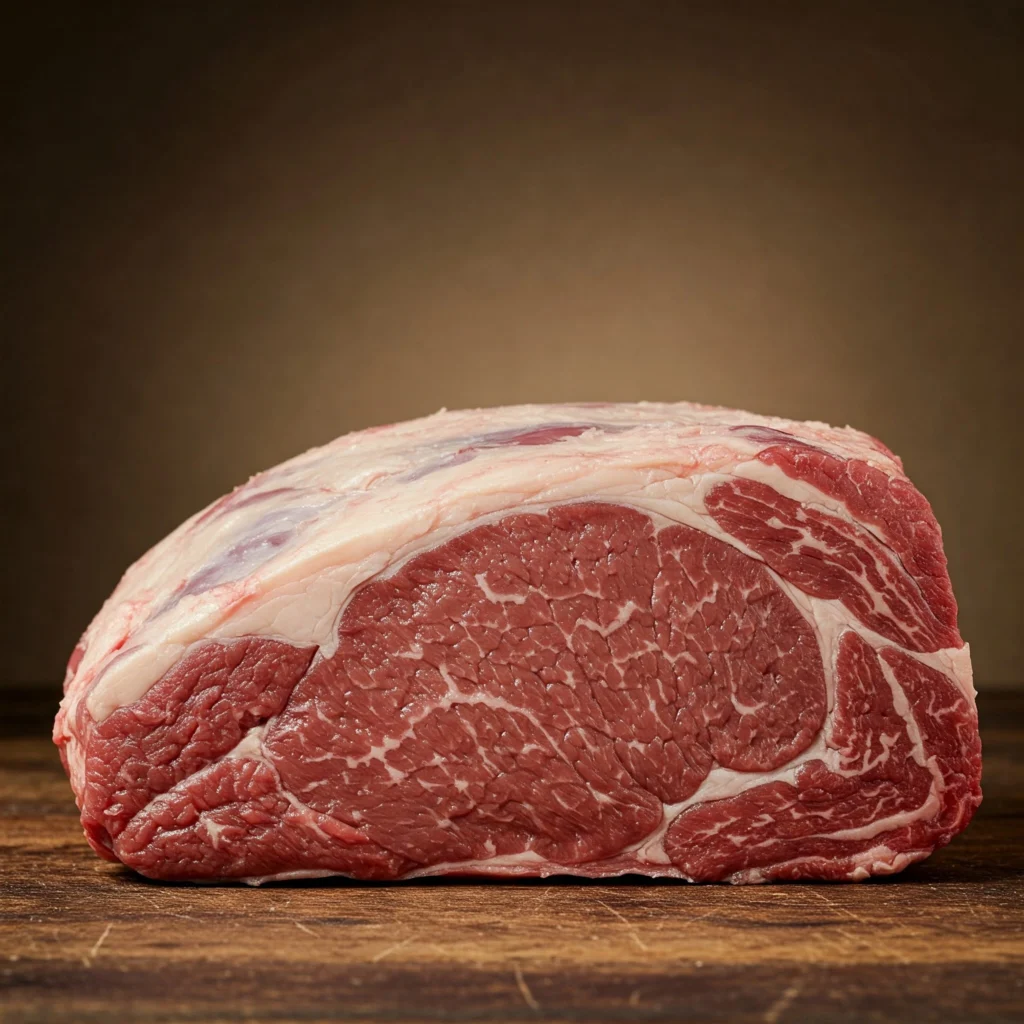
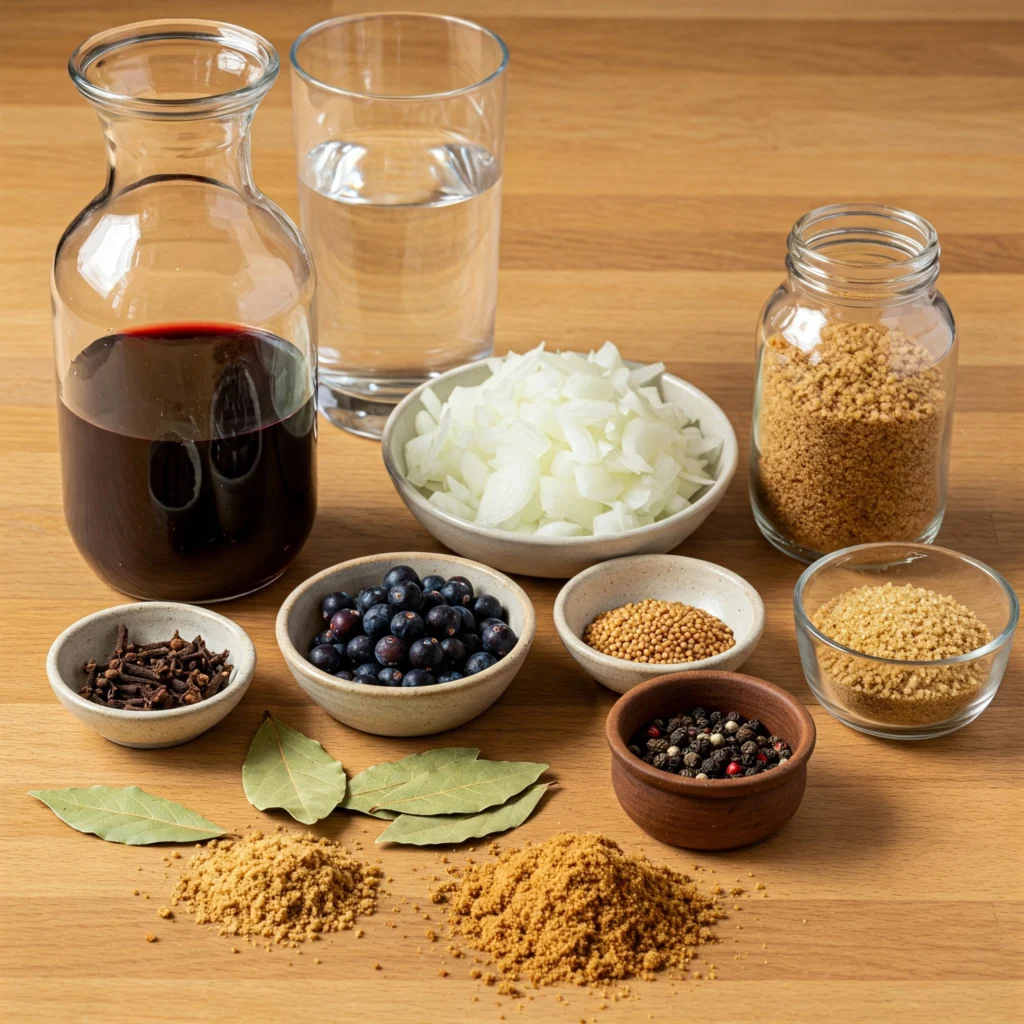
🥩 Essential Ingredients for Authentic Sauerbraten
To achieve the deep, layered flavors of traditional Sauerbraten, you’ll need:
- Beef (3-4 lbs): A tough, marbled cut like rump roast, chuck, or bottom round (better for long marinating and braising).
- Marinade Base: Red wine vinegar (or a mix of vinegar and red wine), water, and onions.
- Spices: Whole cloves, juniper berries, bay leaves, black peppercorns, and mustard seeds.
- Sweetening Agent: Brown sugar or honey (balances the acidity).
- Gravy Thickener: Crushed gingersnap cookies (a German secret for a velvety, slightly sweet sauce).
🧂 Preparation & Marination: The Key to Flavorful Meat
1. Marinating the Meat (3-5 Days Ahead)
- Place the beef in a non-reactive container (glass or ceramic).
- Combine vinegar, water, sliced onions, and spices in a saucepan, bring to a boil, then cool.
- Pour the marinade over the meat, ensuring it’s fully submerged.
- Refrigerate for at least 3 days, turning the meat daily for even flavor absorption.
💡 Pro Tip: The longer the marination, the more tender and flavorful the meat!
🌿 Secret to Authentic Seasoning
The gingersnap cookies are the magic touch—they thicken the gravy while adding a subtle sweetness and spice. Another trick is to sear the meat before braising to lock in juices and deepen the flavor.
👩🍳 Step-by-Step Cooking Method
1. Remove & Dry the Meat
- Take the beef out of the marinade (reserve the liquid) and pat dry.
2. Sear the Meat
- Heat oil in a Dutch oven and sear the meat on all sides until browned. Remove and set aside.
3. Sauté Aromatics
- In the same pot, cook onions, carrots, and celery until softened.
4. Braise the Meat
- Return the meat to the pot, add the reserved marinade, and bring to a simmer.
- Cover and cook in a 325°F (160°C) oven for 3-4 hours until fork-tender.
5. Thicken the Gravy
- Remove the meat, strain the liquid, and simmer with crushed gingersnaps until thickened.
❌ Common Mistakes to Avoid
- Skipping the long marinade → Results in less tender meat.
- Using lean cuts → Tough and dry instead of succulent.
- Over-reducing the gravy → Can become too sour.
- Not straining the gravy → Leaves unwanted spice bits.
🍽️ Traditional Side Dishes & Accompaniments
- Rotkohl (Braised Red Cabbage) – Sweet and tangy balance.
- Kartoffelklöße (Potato Dumplings) – Perfect for soaking up gravy.
- Spätzle (Egg Noodles) – A Swabian favorite.
- Crusty Bread or Pretzels – For mopping up extra sauce.
🧊 Storage & Reheating Guidelines
- Fridge: Store leftovers in an airtight container for up to 4 days.
- Freezer: Freeze gravy and meat separately for up to 3 months.
- Reheating: Warm gently on the stovetop with a splash of broth to keep it moist.
🎉 Conclusion: Time to Cook Your Own Sauerbraten!
Now that you know the secrets behind this German classic, why not bring a taste of Germany to your kitchen? The long marination is worth the wait, delivering a dish that’s rich, tender, and unforgettable.
👉 Have you tried making Sauerbraten before? Share your tips or variations in the comments!
❓ FAQ: Your Sauerbraten Questions Answered
1. Can I use pork or venison instead of beef?
Yes! Pork (especially in Bavaria) and venison (a traditional game meat) are excellent alternatives.
2. What if I don’t have juniper berries?
You can omit them or add a splash of gin (which contains juniper) for a similar flavor.
3. Can I shorten the marinating time?
For best results, at least 3 days is ideal, but 24-48 hours will still work in a pinch.
4. Why gingersnap cookies?
They add a unique sweet-spicy depth and help thicken the gravy naturally.
5. Is Sauerbraten served cold?
No, it’s always served hot, often with warm sides like potato dumplings.
Ready to embark on this German culinary adventure? Gather your ingredients, start marinating, and get ready for a meal that’s truly special! 🇩🇪🍖

